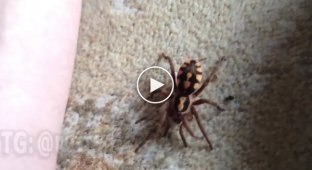Goliath bird-eater: the largest spider on the planet (13 photos)
A hairy monster the size of a plate. Its chelicerae are huge, and a drop of venom can kill a horse. It is so ferocious and bloodthirsty that it kills birds in flight! That's how the vast majority imagines the Goliath tarantula, the largest spider on the planet. 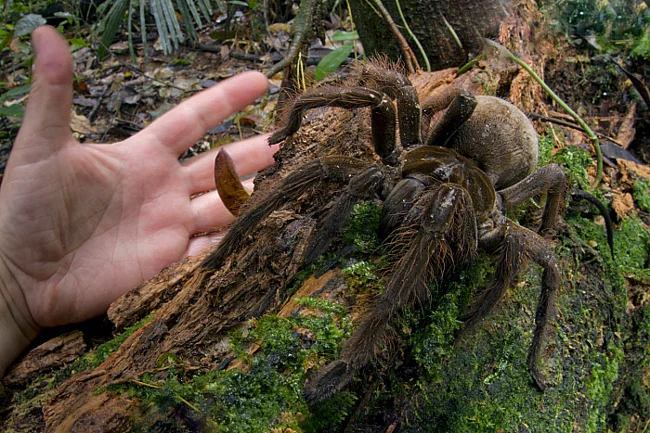
This article will contain a lot of photos of people who tried to hit the spider but missed. We can't blame them!
But you know what's ironic? When meeting a person face to face, the fluffy one will most likely throw its paws out of fear! So we ask arachnophobes to stay put. We will dispel the halo of myths and legends about furry giants and tell the truth.
The Goliath tarantula is the largest spider of all 44,000 species. This is true. The span of the giant hairy one's legs reaches 30 centimeters, and the length of the body is 16 centimeters. At the same time, the plump tarantula weighs about 170 grams, almost as much as your smartphone, from which you are most likely reading now. 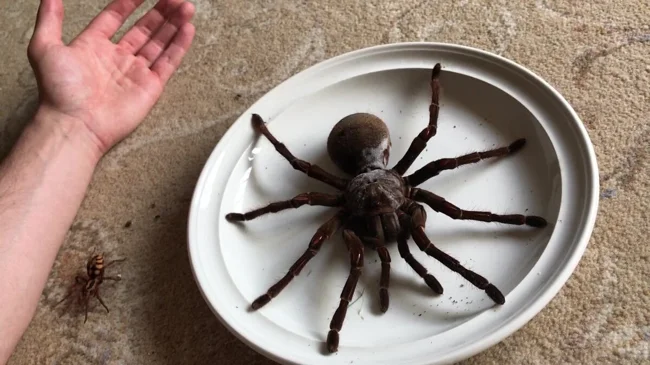
The perfect dish for your ex!
Good news for arachnophobes: woolly monsters live only in the north of South America, in the impenetrable jungles along the banks of the Amazon and in dense mountain forests. Bad news for arachnophobes: one day, some big fan of spiders decided that having a Goliath tarantula at home was a great idea. Now these creepy arthropods can even live behind your wall.
But this is not a reason to have a flamethrower on your balcony! Firstly, these bastards will not be able to survive in the wild here - they will die at the first frost. And secondly, no matter how terrible the Goliaths may seem to you, they are practically harmless! 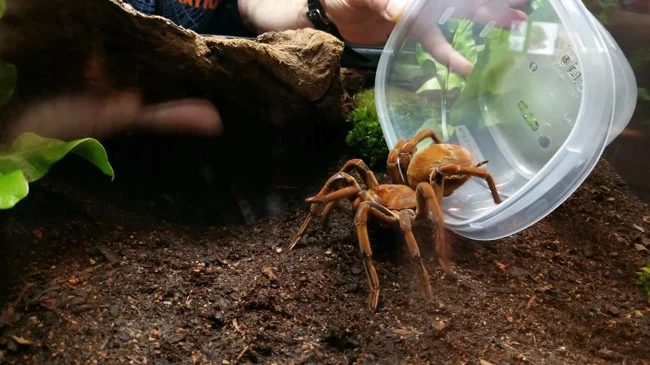
The main thing is to leave a sign at the entrance: "Beware of the evil spider!"
Let's start with their killing abilities. Due to their size, tarantulas are really capable of hunting large prey by spider standards. Their diet consists mainly of large insects and arthropods. Small reptiles, amphibians, and mammals are also within their reach. 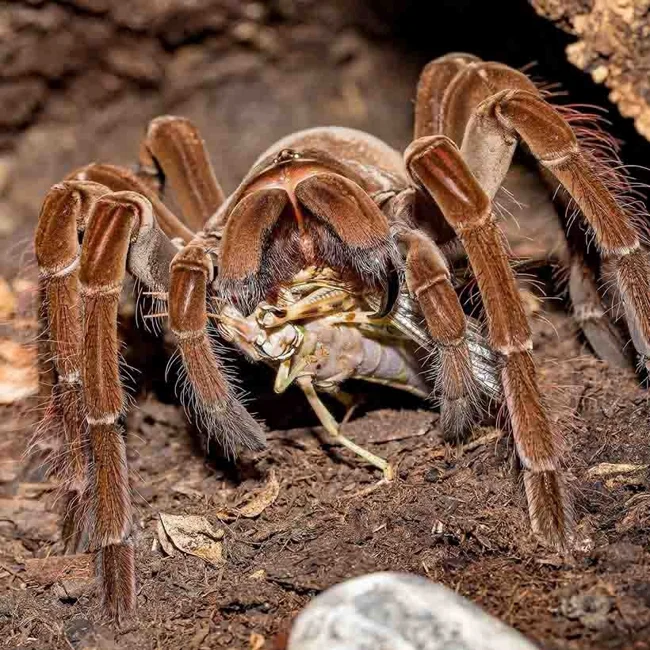
Svetlana, I don't hear the crunch of the meringue!
Wait, what about the birds?.. The diet of birds is written right in the name of the species! Well, birds can indeed be found in the diet of the eight-legged furry creatures. But only in one single case: the spider found a nest with yellow-mouthed young or a clutch. 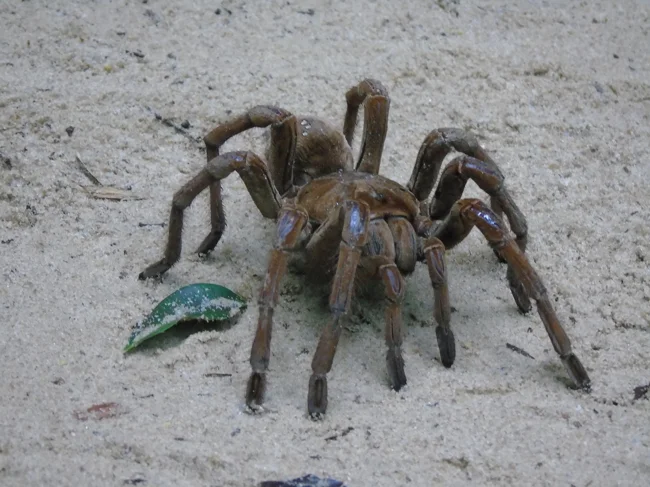
Hi, I'm looking for Harry Potter, I have a personal score to settle.
The thing is that the spider's hunting style makes catching birds almost impossible. Goliath attacks its prey from an ambush - fortunately, hiding in the lush jungle is not a difficult task. With its powerful chelicerae, it pierces the chitinous armor. If the prey is vertebrate, the spider aims right at the skull to hit the brain. The tarantula injects poison that dissolves the insides. It kills the victim in seconds. All that remains is to carry the mortal carcass to the lair to enjoy a meal of digested organs. 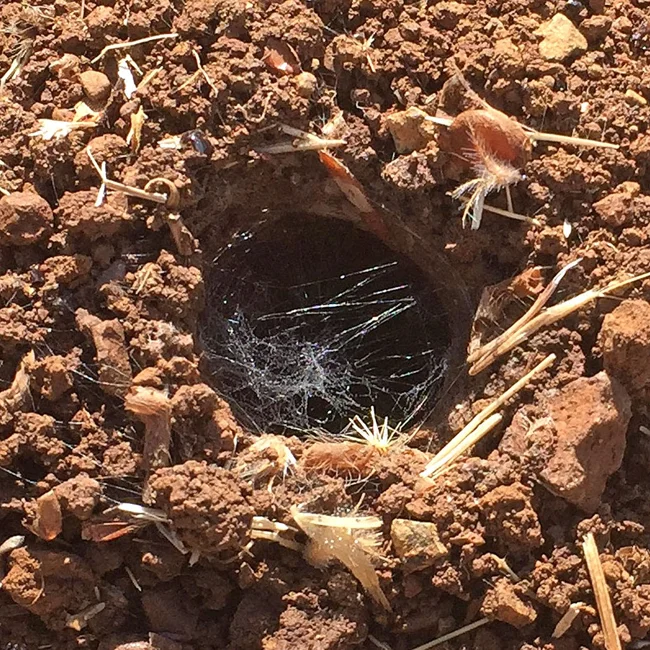
A tarantula's hole is usually quite unremarkable. Inside, it is decorated with silk from a web.
How many people has this hairy killing machine killed? You won't believe it. Zero. There is not a single recorded case of death after a tarantula bite! Indeed, the spider's venom is fatal for small creatures. They say that one bite can even kill a cat. But for a person, the goliath's poison is not terrible. Their bite is comparable in sensation to a bee sting. Well, maybe a little more painful. 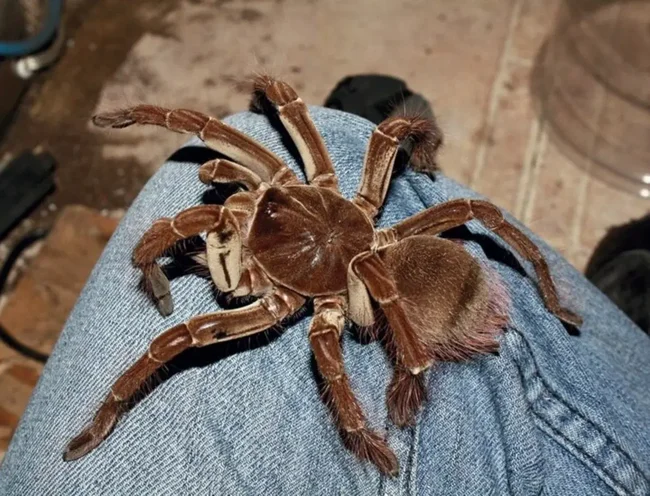
Big, fluffy, sits on your lap. Isn't it a cat?
Let's say more: a tarantula, upon seeing a person, will rush to hide in a shelter with all eight legs. The spider does not seek confrontation with creatures larger than itself. For us, this is a goliath - a terrible inhabitant of the dense jungle. And for local inhabitants, including people, this is an excellent snack! The peoples of South America have learned to eat tarantulas. They say that goliaths taste like shrimp. 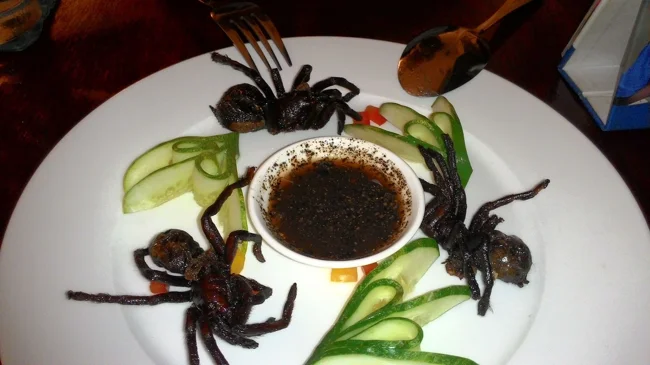
Fried tarantulas (of other species) are one of the traditional dishes in Cambodia. Would you like to try them?
Even if the spider is pinned down, it will not attack first! The goliath avoids the fight with all its might! First, the tarantula shows that it is not a scumbag, but the largest spider on the planet! It rears up, spreads its giant paws, wiggles its fangs threateningly and hisses. The sound is something between a rattlesnake and ripping off Velcro. 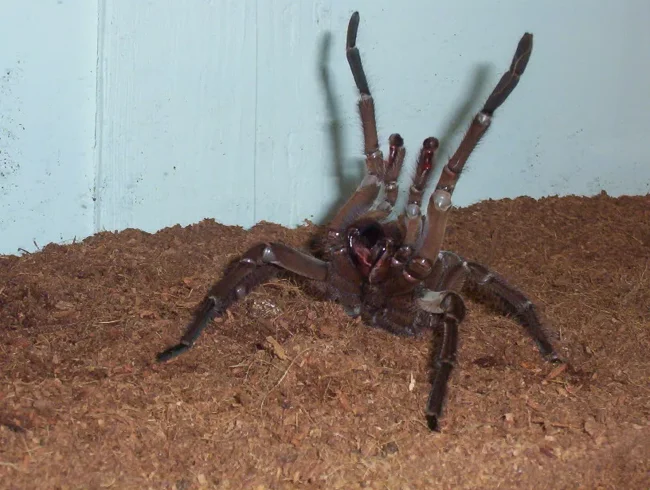
I raise my hands, I want to surrender to you! Please don't eat me, I'll bite!
The spider makes this noise with the help of long hairs on its legs, so they don't shave their legs on purpose. Sometimes at this stage of self-defense, the goliaths turn their backs to the offender and start bombing. The spider's feces are not toxic, but the situation is quite unpleasant and it kills your appetite. 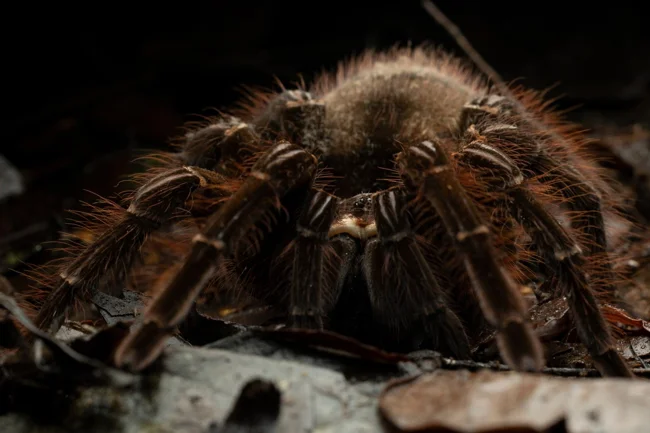
Oh well, you won't see anything under your pants anyway!
If the tricks don't work, the second stage of self-defense begins - poisonous hairs. The spider's abdomen has special stinging bristles. When the snout of an intruder approaches to grab the prey, the goliath combs some of the hairs off itself with its paws and directs them at the offender. Spider hairs contain a locally irritating toxin. When in contact with the skin, and especially the mucous membrane, it causes pain, like nettles. The "burn" will itch and heal for several days! 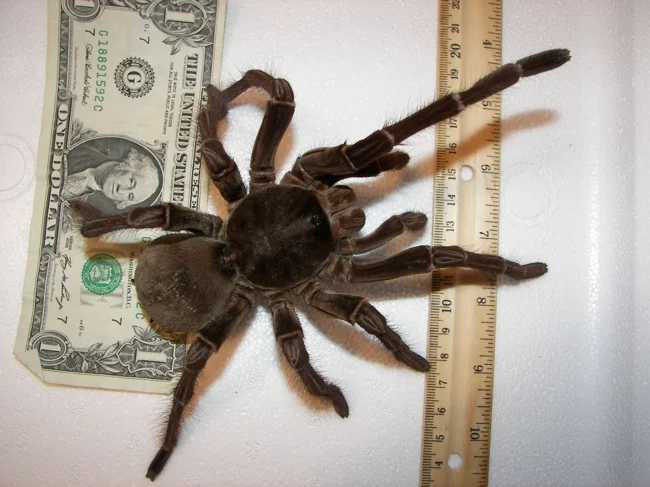
When you won the contest for the largest body size.
So, tarantulas do not hunt birds, do not kill people and do not even try to attack us! Maybe they also keep an eye on their offspring? It turns out, yes!
Spiders reach sexual maturity late - by 3-6 years. The male finds his lady love by smell and the web with which she weaves her cozy burrow from the inside. He pulls the strings just like your manipulative ex, which makes the female spider come out and either accept his advances or eat him. Most often, the first option: goliaths are quite friendly even to their own kind. But the male still dies soon - about six months after mating - such is their biology. 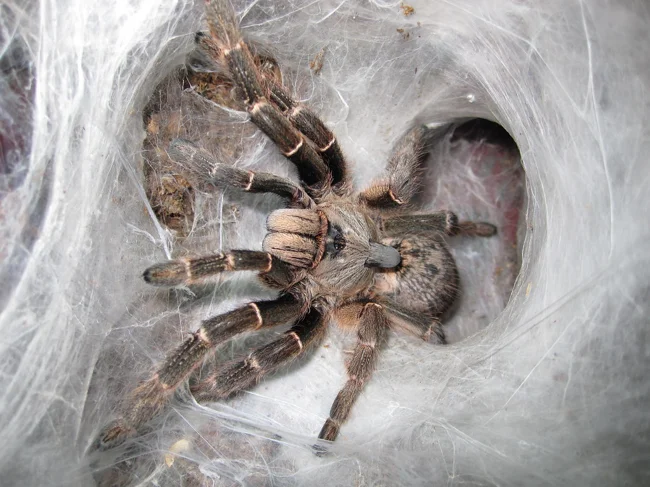
A goliath in her prime waits for a male for one night. And maybe for one dinner...
The female weaves a cocoon and lays up to 200 eggs inside. She deftly weaves her stinging hairs into the web - this way the clutch is protected from predators. After 6-8 weeks, the spiderlings emerge from the cocoon. But they are in no hurry to leave the parental quarters. They will spend a couple of days, until the first molt, next to the big mother, and only then will they go on to live their own lives. The female, despite all the care, can live up to 25 years - for spiders, this is a record longevity! 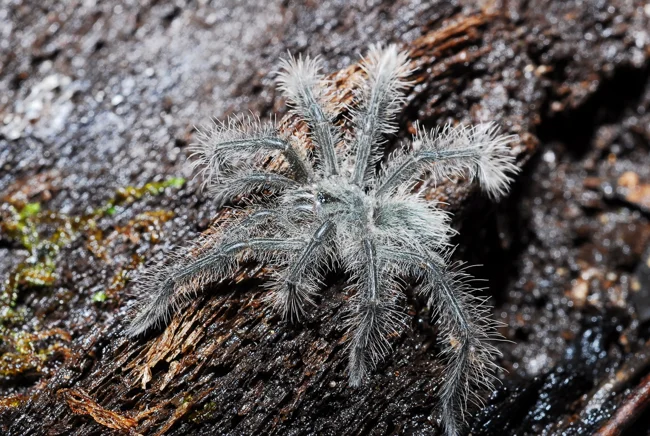
This is a baby tarantula. Fluffy, small and gray. Dozens of molts and a long path to growing up await him.













